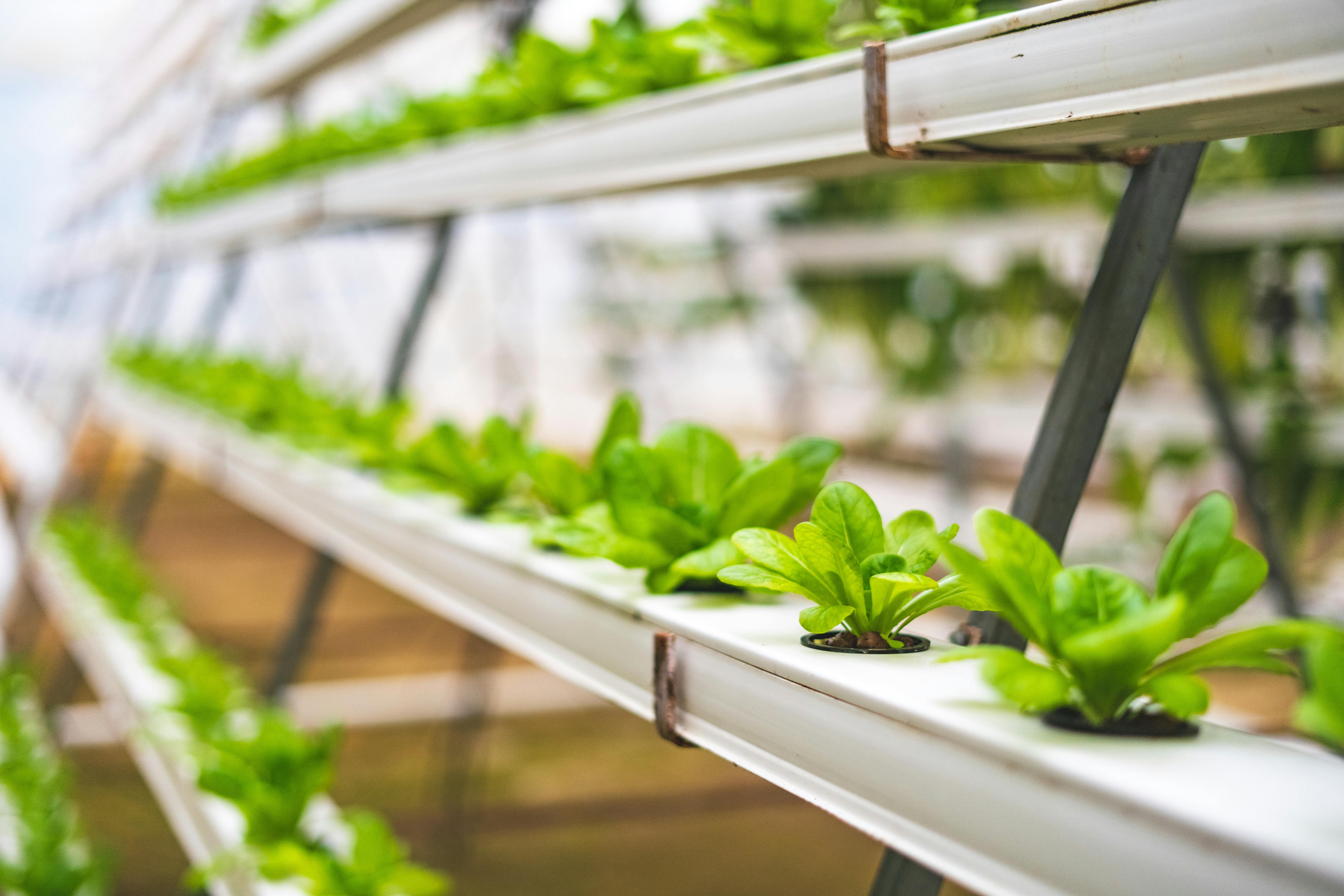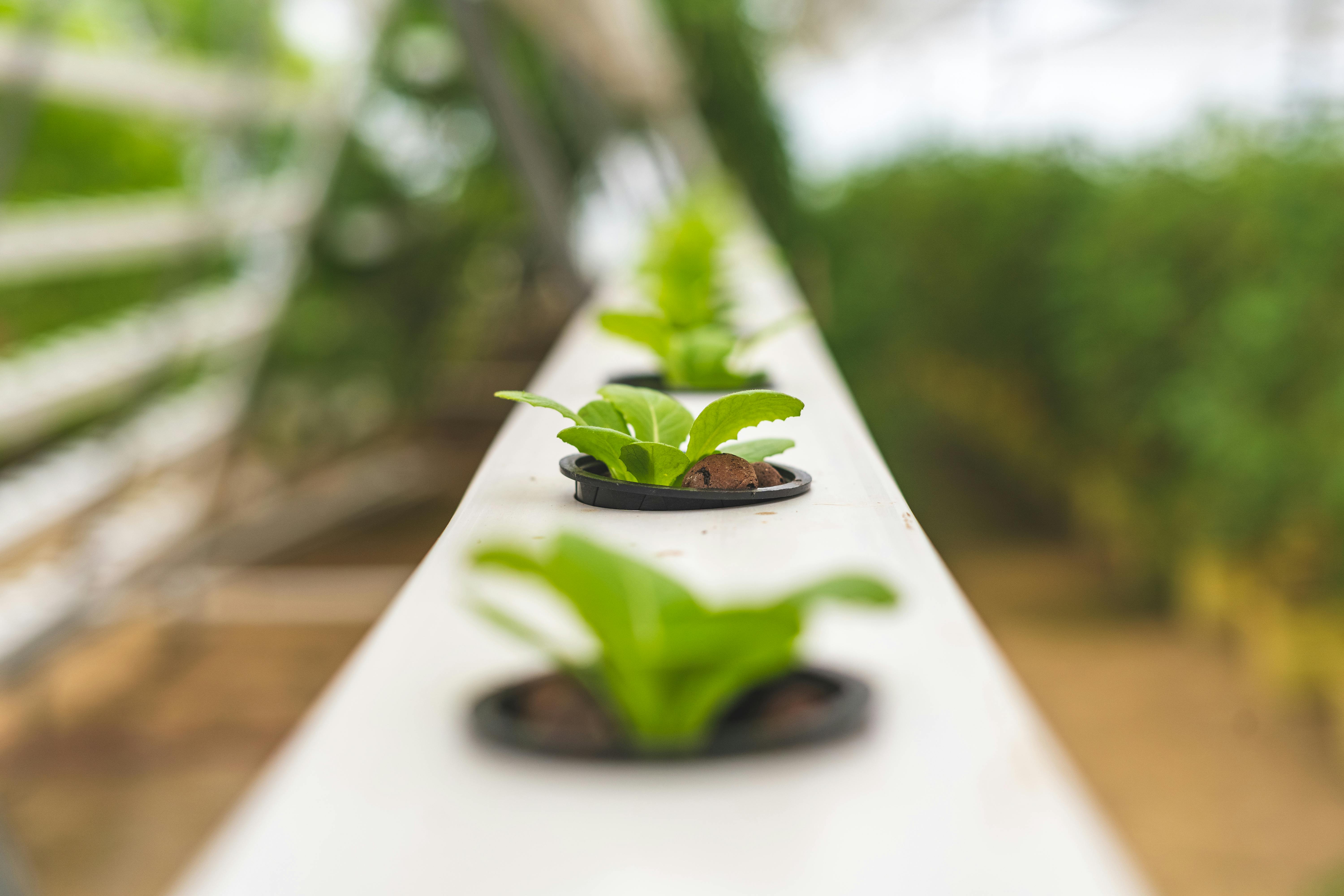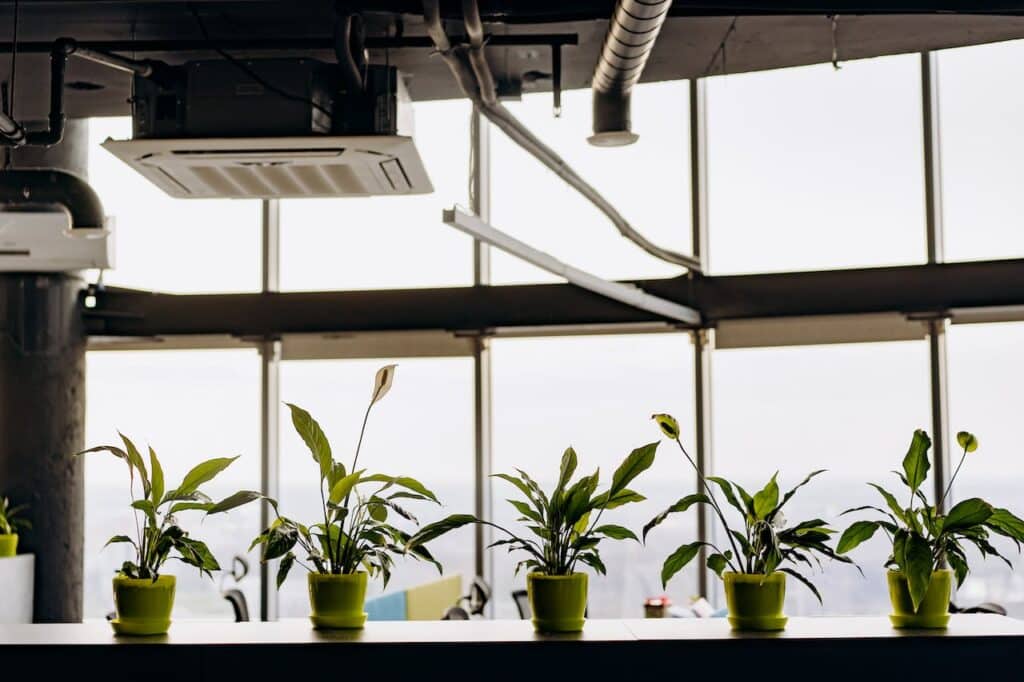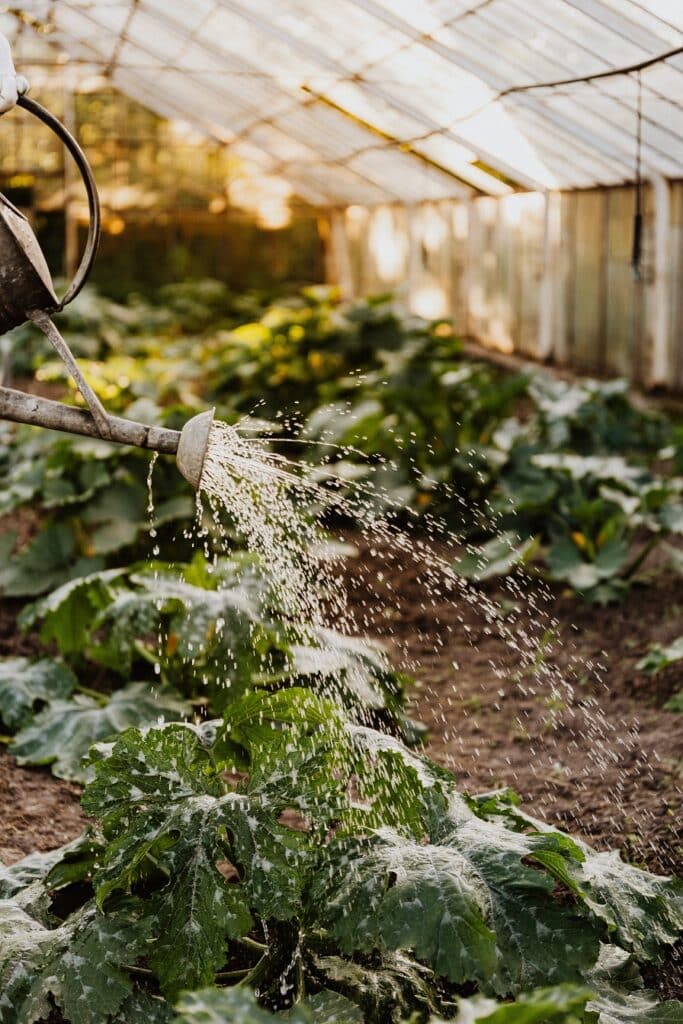You’re about to discover the incredible advantages of moving plants from soil to hydroponics. This innovative method of growing plants without soil has gained popularity for its numerous benefits, ranging from increased growth rates to enhanced nutrient absorption. By making this switch, you’ll not only witness healthier and lusher plants but also enjoy the convenience of a controlled environment that allows you to garden all year round. Prepare to embark on a journey that will revolutionize the way you nurture your plants, opening up a whole new world of possibilities.

Understanding What Hydroponics Is
Definition of hydroponics
Hydroponics is a method of growing plants without the use of soil. Instead, plants are grown in nutrient-rich water solutions, allowing them to take in essential nutrients directly through their roots. This revolutionary way of cultivating plants provides precise control over growing conditions and allows for maximized space efficiency.
Explanation of how hydroponics works
In hydroponics, plants are typically placed in containers that suspend their roots in the nutrient solution. The solution contains a carefully balanced mix of essential nutrients, ensuring that plants receive all the nourishment they need to thrive. This method provides direct access to nutrients, eliminating the need for plants to search for them in soil. The environment in which hydroponic plants grow can be closely regulated, allowing for optimal conditions such as temperature, humidity, and lighting. This level of control enables accelerated growth and higher yields.
Various types of hydroponics systems
There are various types of hydroponics systems, each with its own unique characteristics and advantages. Some popular systems include the nutrient film technique (NFT), deep water culture (DWC), and vertical farming systems. NFT involves a thin film of nutrient solution flowing over the roots, supplying them with nutrients and oxygen. DWC, on the other hand, submerges the roots directly into the nutrient solution. Vertical farming systems make efficient use of limited space by stacking plant beds, allowing for increased plant density. Each system offers different benefits and is suitable for various plant types and growing conditions.
Reasons for Transferring Plants to Hydroponics
Indoor growing conditions and control
Transferring plants to hydroponics offers the ability to create optimal indoor growing conditions, which is one of the primary reasons. Traditional soil-based gardening is heavily influenced by unpredictable weather patterns, making it challenging to create consistent growing environments. With hydroponics, you can have complete control over factors such as temperature, humidity, and lighting. This level of control ensures that plants receive the ideal conditions for growth, resulting in healthier and more robust yields.
Lack of viable soil
In certain circumstances, the soil may not be suitable for growing plants due to its poor quality or contamination. Hydroponics eliminates the reliance on soil, making it an excellent solution for areas with limited or non-existent soil access. By removing the need for viable soil, hydroponics opens up opportunities for cultivation in areas that were previously unsuitable for traditional farming, such as deserts or urban environments.
Maximizing space efficiency
Hydroponics systems allow for maximum space efficiency. By eliminating the need for large areas of land, it becomes possible to grow crops in smaller spaces. This is particularly beneficial in urban areas where land is scarce and expensive. Vertical farming systems, in particular, utilize vertical space, enabling the growth of multiple layers of plants in a smaller footprint. The ability to grow upwards significantly increases crop yield per square foot, making hydroponics a highly efficient and space-saving option for growing food.
Growing plants in urban areas
As urbanization continues to increase, finding ways to grow food locally becomes increasingly important. Hydroponics provides a viable solution for urban farming by allowing plants to be grown within the city limits. By utilizing vertical farming systems or repurposing empty buildings, urban growers can grow fresh produce closer to consumers, reducing the reliance on long-distance transportation. This not only reduces carbon emissions but also ensures that urban populations have access to fresh, locally grown food.

Steps to Move Plants from Soil to Hydroponics
Selecting suitable plants for hydroponics
Before moving plants to a hydroponic system, it is crucial to select suitable plant species. Not all plants thrive in hydroponic environments, as some have specific soil adaptations or require unique growing conditions. Research which plants are well-suited for hydroponic cultivation, focusing on crops that have been successfully grown hydroponically in the past. Leafy greens, herbs, and tomatoes are popular choices due to their rapid growth and relatively straightforward nutrient requirements.
Preparation of the hydroponic system
Proper preparation of the hydroponic system is essential for successful plant transfer. Clean and sterilize all equipment to prevent the introduction of pests or diseases. Set up the hydroponic system according to the chosen method, ensuring that all necessary components, such as a reservoir for the nutrient solution and a pump for circulation, are in place. Test the system to ensure that everything is functioning correctly before introducing the plants.
Properly removing plants from soil
When transferring plants from soil to hydroponics, it is crucial to properly remove them from the soil without damaging the root system. Carefully dig around the plant, ensuring that the root ball remains intact. Gently shake off excess soil and rinse the roots under running water to remove any remaining soil particles. Be cautious not to damage the delicate roots during this process, as they are vital for the plant’s future growth in the hydroponic system.
Introducing plants into the hydroponic system
After carefully removing the plants from the soil and rinsing the roots, it’s time to introduce them into the hydroponic system. You should place the plants into the designated containers or growing beds, making sure to properly submerge or position the roots to receive the nutrient solution. Secure the plants in place to prevent any movement that could disrupt their growth. Finally, fill the system with the nutrient solution and carefully monitor the plants’ progress as they adjust to their new growing environment.
Hydroponics Vs Soil-Grown Plants
Comparison of growth rates
One of the most significant advantages of hydroponics over soil-based gardening is the significant difference in growth rates. Hydroponically grown plants often show accelerated growth, allowing for faster crop turnover and higher yields. This is primarily due to the optimized conditions provided by hydroponic systems, such as consistent nutrient availability, ideal pH levels, and controlled environmental factors like lighting and temperature. Soil-based plants, on the other hand, are subject to the natural variability of soil quality, weather fluctuations, and the competition for nutrients, resulting in potentially slower growth rates.
Impact on plant health
Hydroponics can contribute to improved plant health compared to soil-grown plants. With precise control over nutrient delivery, plants receive the essential elements they need in the correct quantities and proportions, reducing the risk of nutrient deficiencies or imbalances. Additionally, by eliminating the presence of soil-borne diseases and pests, hydroponics minimizes the risk of infection and allows plants to focus their energy on growth and productivity. Soil-based plants, on the other hand, are exposed to a higher likelihood of disease and pest infestation, requiring additional management and potential use of pesticides.
Sustainability considerations
When you think about sustainability, hydroponics outshines traditional soil cultivation methods in several ways. Hydroponic systems consume significantly less water than soil-based farming. They also enable precise control over nutrient delivery, cutting down the necessity for fertilizers and minimizing the risk of nutrient runoff and water pollution. Moreover, hydroponics can thrive in urban areas, curbing the reliance on long-distance transportation and decreasing the carbon emissions tied to food production and distribution.
Cost and investment analysis
When assessing the long-term cost-effectiveness, it is important to consider several factors despite the initial costs associated with setting up a hydroponic system. Hydroponics often requires less water and fertilizer, resulting in potential savings in these resources. Additionally, the ability to grow crops year-round and control the environment can lead to increased yields and a higher return on investment. Although hydroponics may require an initial investment, the potential benefits in terms of higher yields and more efficient resource utilization can make it a cost-effective option in the long run.

Higher Yields With Hydroponics
Opportunity for year-round growth
One of the significant advantages of hydroponics is the ability to grow crops year-round, independent of seasonal variations. By controlling the environment within the hydroponic system, growers can recreate the ideal conditions for plant growth regardless of the external climate. This means that even in regions with harsh winters or limited sunlight, it is possible to maintain consistent production, ensuring a steady supply of fresh produce throughout the year.
Increased plant density
Hydroponic systems increase plant density compared to traditional soil-based farming. Vertical farming techniques maximize available growing space by stacking plants vertically. This results in the ability to grow more plants in a smaller area, ultimately increasing overall crop yield. Moreover, hydroponics reduces the need for space between plants, as the nutrient solution delivers all necessary nourishment directly to the roots, eliminating competition for resources.
Effects of controlled environment on yield
The controlled environment provided by hydroponics systems directly influences crop yield. By optimizing factors such as temperature, humidity, and lighting, growers can create ideal conditions that promote plant growth and productivity. This control reduces the likelihood of stress factors, such as extreme temperatures or inconsistent lighting conditions, negatively impacting the plants and their yield. The ability to create a consistent and supportive environment leads to healthier plants, faster growth, and ultimately, higher yields.
Faster crop turnover
In hydroponics, plants often experience faster growth rates compared to soil-based cultivation. This accelerated growth allows for faster crop turnover, meaning that crops can be harvested more frequently throughout the year. This rapid cycle not only increases the overall yield potential but also offers the opportunity to experiment with different plant varieties or fine-tune cultivation techniques more quickly. The faster crop turnover in hydroponics ensures a more efficient use of resources and maximizes the return on investment.
Control Over Nutrient Delivery
Specific nutrient recipe for each species
One of the advantages of hydroponics is the ability to tailor the nutrient solution to the specific needs of each plant species. Unlike in soil-based cultivation, where nutrients can be variable and dependent on soil quality, hydroponics allows for precise control over nutrient delivery. By understanding the specific nutrient requirements of each plant, growers can create a custom nutrient recipe that provides the ideal balance of essential elements. This ensures that plants receive the exact nutrients they need, promoting healthy growth and maximizing yield potential.
Efficiency of nutrient delivery in hydroponics
In hydroponics, nutrients are delivered directly to the plant roots, providing exceptional efficiency in nutrient absorption. Unlike in soil-based gardening, where plants often need to search for nutrients by extending their roots, hydroponic plants have immediate access to all the necessary nutrients. This efficient delivery system allows plants to allocate more energy towards growth and productivity, rather than expending resources on extensive root development.
Avoidance of soil-borne diseases
By eliminating the use of soil, hydroponics significantly reduces the risk of soil-borne diseases that can harm plants. Soil can harbor various pathogens, including fungi, bacteria, and viruses, which can infect plants and impede their growth. Hydroponic systems remove this risk by creating a soil-free environment where pathogens have limited opportunity to thrive. As a result, plants in hydroponics are less susceptible to disease and often maintain better overall health and productivity.
Control over pH levels
The pH level of the nutrient solution plays a crucial role in plant health and nutrient availability. Hydroponics allows for precise control over pH levels, ensuring optimal nutrient absorption. By regularly monitoring and adjusting the pH, growers can maintain the ideal range specific to each plant species. This control enables plants to efficiently absorb nutrients, avoiding the risk of nutrient deficiencies or toxicities associated with pH imbalances. Such precise control over pH levels is not possible in soil-based gardening and presents a significant advantage of hydroponics.
Water Conservation Benefits
Comparison of water usage between soil-based and hydroponic farming
Water conservation is a critical concern in agriculture, and hydroponics offers distinct advantages over soil-based farming in this regard. Traditional soil-based farming often requires significant amounts of water, but much of it may be lost through runoff, evaporation, or inefficient absorption by plants. In hydroponics, water usage is significantly reduced compared to soil-based farming. The closed-loop systems of hydroponics enable water recirculation, minimizing waste and ensuring that plants receive the necessary hydration without excessive use of this limited resource.
Recirculation of water in hydroponics systems
Hydroponic systems promote the recirculation of water, offering a sustainable approach to water consumption. The nutrient solution in a hydroponic system can be continuously recirculated, thanks to the use of pumps and reservoirs. Excess water is collected and reintroduced into the system, after being filtered and replenished with essential nutrients. This recirculation minimizes water waste and allows for efficient water usage, making hydroponics a more sustainable choice compared to traditional soil-based farming.
Reduction in water loss due to evaporation
Evaporation is a significant source of water loss in traditional soil-based farming. Open fields and exposed soil can lose substantial amounts of water to evaporation, resulting in inefficient water utilization. Hydroponics, with its closed-loop system and minimal exposed water surface, significantly reduces water loss due to evaporation. By providing plants with a controlled environment and preventing unnecessary water exposure, hydroponic systems optimize water retention and usage, contributing to overall water conservation efforts.
Positive Environmental Impact
Elimination or reduction of pesticide use
Hydroponics provides a natural advantage in pest management by eliminating or significantly reducing the need for traditional pesticides. Soil-based farming often relies on chemical pesticides to combat pests and diseases, which can have adverse impacts on both the environment and human health. In hydroponics, the controlled environment and absence of soil minimize pest infestations, making pesticide use unnecessary in many cases. This reduction in pesticide reliance contributes to a healthier ecosystem and aligns with the principles of sustainable agriculture.
Lessening of soil erosion issues
Soil erosion is a widespread problem in traditional agriculture, contributing to the loss of valuable topsoil and the degradation of land. Hydroponics eliminates the need for soil, minimizing the risk of erosion. By utilizing soilless growing mediums or directly suspending plants in nutrient-rich water solutions, hydroponics removes the vulnerability to erosion associated with exposure to wind and water. This preservation of soil integrity is key to maintaining arable land for future generations and ensuring sustainable food production.
Decreased water pollution
Soil-based farming often relies on fertilizers, which have the potential to leach into water sources and cause pollution. The use of synthetic fertilizers in soil-based cultivation can contribute to nutrient runoff and eutrophication of water bodies, damaging aquatic ecosystems. With hydroponics, the precise control over nutrient delivery significantly reduces the need for fertilizers, thereby decreasing the risk of water pollution. By preventing nutrient runoff and minimizing the use of fertilizers, hydroponics offers an environmentally responsible approach to farming.
Challenges in Transferring to Hydroponics
Initial setup costs
A significant challenge in transferring to hydroponics is the initial setup costs associated with establishing a hydroponic system. Depending on the size and complexity of the system, there may be expenses for equipment, infrastructure, and specialized nutrients. However, it is essential to recognize that these upfront costs can be offset by the potential long-term benefits, such as increased yields and resource efficiency. Additionally, as the popularity of hydroponics grows, more affordable options and equipment are becoming available, making it increasingly accessible to a broader range of growers.
Learning how to manage a hydroponic system
Transitioning to hydroponics requires a learning curve, as growers must familiarize themselves with the specific management practices associated with this method of cultivation. Understanding the nuances of nutrient balance, pH management, and environmental control is crucial for success in hydroponics. However, with access to educational resources, workshops, and experienced growers, the learning process can be facilitated. As with any new skill, patience and a willingness to learn are key to overcoming this challenge and reaping the benefits of hydroponics.
Dealing with potential system failures
Like any farming system, hydroponics is not immune to potential system failures. Equipment malfunctions, power outages, or water quality issues can pose risks to the health and productivity of plants in a hydroponic system. It is essential to have contingency plans in place and regularly monitor the system to identify and address any potential issues. By maintaining vigilant oversight and being prepared for potential setbacks, growers can mitigate the impact of system failures and ensure the continued success of their hydroponic operation.
Power dependency
Hydroponics systems often require electricity to power essential components such as pumps, lighting, and environmental control systems. This power dependency can be a challenge, particularly in regions with unreliable or limited electrical supply. However, advancements in renewable energy sources, such as solar power, offer potential solutions to this challenge. By integrating sustainable energy sources into hydroponic systems, growers can reduce their reliance on traditional power grids and increase the sustainability of their operations.
Future of Hydroponics
Technological advancements in hydroponics
The future of hydroponics holds exciting possibilities, driven by ongoing technological advancements. Robotics and automation are being increasingly integrated into hydroponic systems, streamlining processes, and reducing labor requirements. Smart sensors and data analytics enable real-time monitoring of plant health and nutrient levels, allowing for more precise adjustments and optimization. Additionally, advancements in lighting technology, such as LED grow lights, are providing more efficient and tailored solutions for plant growth. These technological innovations continue to push the boundaries of what is achievable in hydroponics.
Potential for sustainable urban farming
As the world’s population continues to grow, sustainable food production in urban areas becomes increasingly crucial. Hydroponics offers a promising solution for sustainable urban farming. By utilizing vertical farming systems, empty buildings, or repurposed spaces, urban growers can produce fresh, nutritious food in close proximity to consumers. This reduces the carbon footprint associated with transporting food from rural areas and ensures a more resilient food system. As urbanization accelerates, the potential for hydroponics to revolutionize urban farming is vast.
Impact on global food production
Hydroponics has the potential to play a significant role in addressing global food production challenges. With its ability to maximize yield potential, conserve resources, and create efficient growing environments, hydroponics can contribute to the sustainable production of food worldwide. By reducing the reliance on traditional agricultural methods, which are often limited by climate and land availability, hydroponics opens up opportunities for food production in regions where it would otherwise be challenging. As technology and knowledge continue to advance, hydroponics has the potential to revolutionize the agricultural industry and contribute to a more food-secure world.
In conclusion, transferring plants from soil to hydroponics offers numerous benefits and opportunities. The understanding of hydroponics as a soil-less cultivation method, its advantages over traditional soil-based farming, and the steps involved in transferring plants are crucial for successful adoption. Hydroponics offers higher yields, greater control over nutrient delivery, water conservation benefits, and positive environmental impacts. While challenges such as initial setup costs and system management exist, the future of hydroponics looks promising with ongoing technological advancements and the potential for sustainable urban farming. By embracing hydroponics, individuals and communities can contribute to sustainable food production, reducing environmental impact and enhancing food security for future generations.




